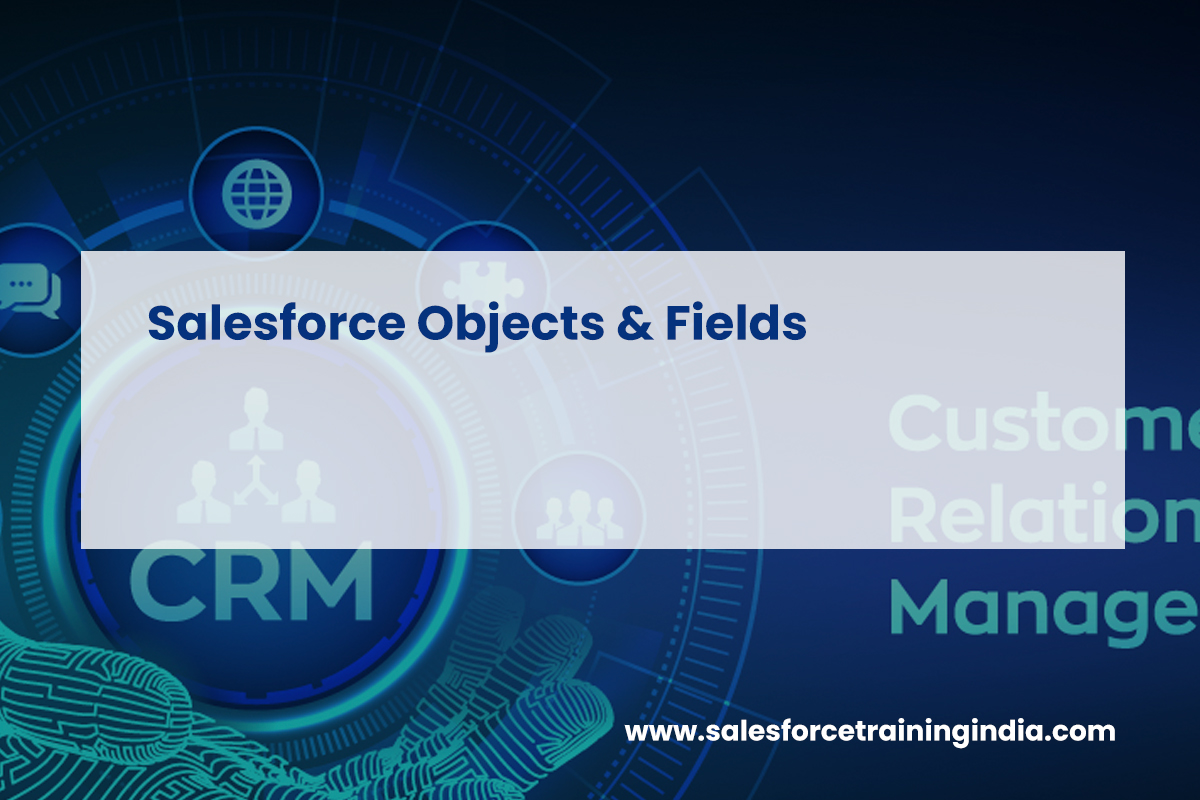Salesforce Objects & Fields
When learning Salesforce, it’s essential to understand ‘objects’ and ‘fields’, as they are fundamental to how Salesforce stores and manages data. Think of Salesforce as a large filing cabinet, where each drawer (object) holds different types of files (records), and each file contains various details (fields).
- Objects in Salesforce: Objects in Salesforce are like containers or tables that store specific types of data. For instance, there are ‘Lead’, ‘Account’, ‘Contact’, and ‘Opportunity’ objects. Each object serves a particular purpose. For example, the ‘Lead’ object is used to store information about potential clients, while the ‘Account’ object keeps details about companies you’re doing business with.
- Standard Objects: These are the objects provided by Salesforce by default, like Leads, Contacts, Accounts, etc. They are designed to cover common business needs.
- Custom Objects: Sometimes, your business might have unique needs that standard objects can’t cover. In such cases, you can create custom objects. For example, if you run a pet store, you might want a custom object to track pet appointments.
- Fields in Salesforce: Fields are like the specific pieces of information stored in an object. For instance, in the ‘Contact’ object, you would have fields for the contact’s name, phone number, email address, and other relevant details.
- Standard Fields: These come predefined in both standard and custom objects. For example, most objects will have standard fields like ‘Name’, ‘Created By’, and ‘Last Modified Date’.
- Custom Fields: You can also create custom fields for specific information you want to track. For example, in the ‘Account’ object, you might add a custom field for ‘Preferred Contact Method’ if it’s crucial for your business.
- Relationships Between Objects: Objects can be related to each other. For instance, ‘Contacts’ can be linked to ‘Accounts’, indicating which company a contact belongs to. These relationships help in organizing and viewing data in a more connected and meaningful way.
- Lookup Relationships: This type of relationship links two objects together but loosely. For instance, linking a custom object ‘Pet’ to a ‘Contact’ object to show the pet owner’s details.
- Master-Detail Relationships: This is a stronger connection where the detail (child) record must be related to a master (parent) record. If you delete the master record, the detail record also gets deleted.
Understanding objects and fields in Salesforce is like learning how to organize and find information in a big digital filing system. It’s about knowing where to store information (objects) and what details to keep (fields) so that your business data is organized and easily accessible.
Are you ready to elevate your Salesforce skills? Dive into our specialized Salesforce training in Hyderabad, meticulously designed to provide hands-on experience and real-time knowledge. Our comprehensive, project-based course ensures you gain practical skills with daily notes, engaging projects, and targeted preparation for certifications and interviews, preparing you thoroughly for the dynamic Salesforce ecosystem.




